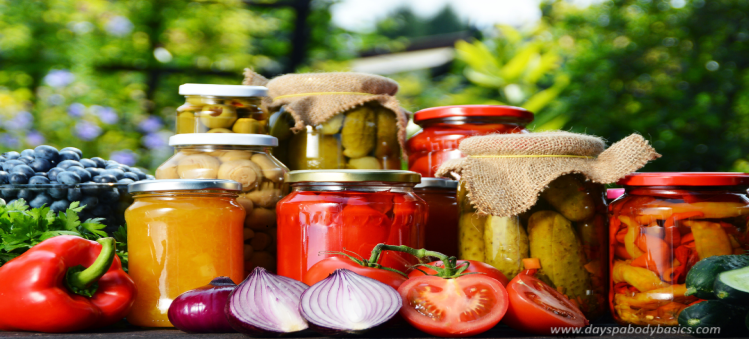New Era is Here: Revolution Underway in the Food Preservative Industry
17-Sep-2024

Introduction
The Food Preservative Industry is undergoing a radical transformation, fueled by technological innovations, environmental considerations, and an increasing emphasis on health and safety. This comprehensive analysis delves into the latest advancements, emerging trends, and future directions in food preservatives. It will also showcase how they are profoundly reshaping our approach to food preservation.
The Evolution of Food Preservation
The food preservation journey is as old as civilization, evolving from basic methods such as salting and drying to sophisticated chemical preservatives. The primary goal has always been to extend shelf life and prevent spoilage caused by microorganisms. However, modern consumers demand more than longevity; they seek safety, nutritional integrity, and minimal processing. This has spurred the industry to innovate while adhering to regulatory standards and ethical considerations.
Embracing Natural and Clean-Label Preservatives
• The Plant-Based Revolution
Consumer demand for clean-label products has catalyzed the trend toward natural preservatives. Plant-based preservatives derived from herbs, spices, and other botanicals are at the forefront of this revolution.
These natural alternatives provide a host of benefits:
Enhanced Safety and Health Appeal: Plant-based preservatives are perceived safer and healthier than synthetic alternatives, aligning with the growing health-conscious consumer base.
Dual Functionality: Many natural preservatives, such as rosemary and thyme extracts, offer preservation and flavor enhancement, adding value to the product.
Sustainability: Sourcing and processing plant-based preservatives often have a lower environmental footprint, which is increasingly important to environmentally conscious consumers.
• The Role of Microbial-Derived Preservatives
The use of beneficial microorganisms and their metabolites in food preservation represents a significant leap forward. Bacteriocins, in particular, are a focus area due to their efficacy against a diverse array of pathogens and their ability to maintain the food's natural quality.
Leveraging Biotechnology in Preservative Enhancement
Biotechnology is a game-changer in the development and optimization of food preservatives. Genetic engineering and advanced fermentation technologies are key drivers in this space.
• Efficiency in Production: Through genetic modification, microorganisms can be engineered to produce preservatives more efficiently than before, reducing production costs and environmental impact.
• Targeted Functionality: Precision fermentation allows for the production of specific compounds with desired preservative qualities, offering targeted and optimized preservation solutions.
Combating Oxidation with Antioxidants
Oxidation is a primary cause of quality degradation in food products. The integration of natural antioxidants as preservatives is a growing focus in the industry.
• Vitamin-Based Preservatives: Vitamins E and C are powerful antioxidants, and have found increased application in preserving oils, fats, and other perishable items.
• Exploring Polyphenols: Polyphenol-rich extracts from grape seeds, green tea, and other sources are investigated for their antioxidant and antimicrobial properties, offering a multifaceted approach to food preservation.
Overcoming Challenges with New Preservatives
Despite their appeal, natural preservatives face challenges regarding broad-spectrum efficacy and stability. Continued research and innovation are addressing these limitations.
• Advanced Delivery Systems: Technologies such as nanoencapsulation are leveraged to improve the stability, solubility, and controlled release of natural preservatives.
• Hybrid Systems: Combining natural preservatives with minimal amounts of synthetic or other preservation techniques (such as reduced temperature storage) can enhance efficacy while maintaining a 'clean label.'
Regulatory and Consumer Acceptance
The evolving landscape of food preservatives brings with it the need for stringent regulatory oversight and proactive consumer education.
• Adherence to Global Standards: As new preservatives are developed, it is important that they meet international food safety standards. An illustrative example of this is the use of sorbate as a food preservative. Sorbate is considered effective and safe when used in a hygienic environment and incorporated into products produced under good manufacturing practices. This has been recognized by various regulatory agencies, such as the Food and Drug Administration (FDA), the Food and Agriculture Organization (FAO), and the European Food Safety Authority (EFSA). These agencies have categorized substances such as potassium sorbate as "generally considered safe" (GRAS). As consumer awareness and concern regarding food ingredients rise, the assurance provided by these regulatory endorsements is vital in sustaining and growing the market for food preservatives.
• Building Consumer Awareness: Building consumer awareness is a critical factor in successfully integrating and accepting new preservatives in the market. Consumers need to understand the benefits, safety, and scientific foundations of these innovations to make informed choices.
Startups: Breeding Ground for Innovation
• Driving Diversification in Preservative Solutions
Emerging startups such as BioVeritas, Sufresca, Mori, MicroPow, and Chinova Bioworks are broadening the spectrum of preservative options. By harnessing unique natural sources and developing advanced biotechnological methods, they introduce a wide range of new and improved preservatives. For instance, in July 2023, BioVeritas, a Texas-based company, developed a scientifically supported, clean-label preservative. Tailored for preserving the flavor and texture of finished food products, this offering demonstrates a notable advancement in food preservation.
• Technology and Research Advancements
Startups benefit from their agility and carry out swift adjustments to align with evolving market trends and changing consumer preferences. This nimbleness is crucial in an industry where consumer demands constantly evolve, especially toward healthier and more natural food options than before. By harnessing genetic engineering, synthetic biology, and precision fermentation, these companies are developing preservatives that are both effective and aligned with consumer preferences for cleaner labels.
Future Prospects: Sustainable and Innovative Food Preservation
The future trajectory of food preservation is marked by sustainability, innovation, and consumer-centric approaches. Research and development in this field are poised to yield groundbreaking solutions that address global food security and environmental concerns.
• Exploring Biodegradable and Renewable Preservatives: Research focuses on developing preservatives from biodegradable and renewable sources, reducing the environmental impact of food preservation.
• Interdisciplinary Research: The intersection of food science and emerging scientific fields opens new avenues for innovative preservation strategies.
Conclusion
The advancements in food preservatives reflect a pivotal shift toward a future where food safety, quality, and sustainability are intrinsically linked. As the industry continues to embrace these innovative and eco-conscious methods, it sets a new standard for preserving and consuming food. This ongoing journey of discovery and improvement in food preservatives promises to enhance the shelf life of our food and nourish the health of our planet and its inhabitants.
About the Author
 Sunanda Ghosh is a researcher with more than 3 years of experience. She has a passion for understanding consumer behavior and market trends, and uses her skills in innovative ways to gather and analyze data. Throughout her career, she has worked with a diverse range of global clients across various industries including technology, semiconductor, and energy. She is dedicated to providing valuable insights that can help shape a company's direction and drive success. The author can be reached at info@nextmsc.com
Sunanda Ghosh is a researcher with more than 3 years of experience. She has a passion for understanding consumer behavior and market trends, and uses her skills in innovative ways to gather and analyze data. Throughout her career, she has worked with a diverse range of global clients across various industries including technology, semiconductor, and energy. She is dedicated to providing valuable insights that can help shape a company's direction and drive success. The author can be reached at info@nextmsc.com
Add Comment
Related Blogs
Distilling the Future: Emerging Trends in the Extra Neutral Alcohol Market
Introduction Extra Neutral Alcohol (ENA), a high-proof, n...
Discover The Recent Trends of The Travel Retail & Duty-Free Industry
The travel retail & duty-free industry offers a tax-exem...









